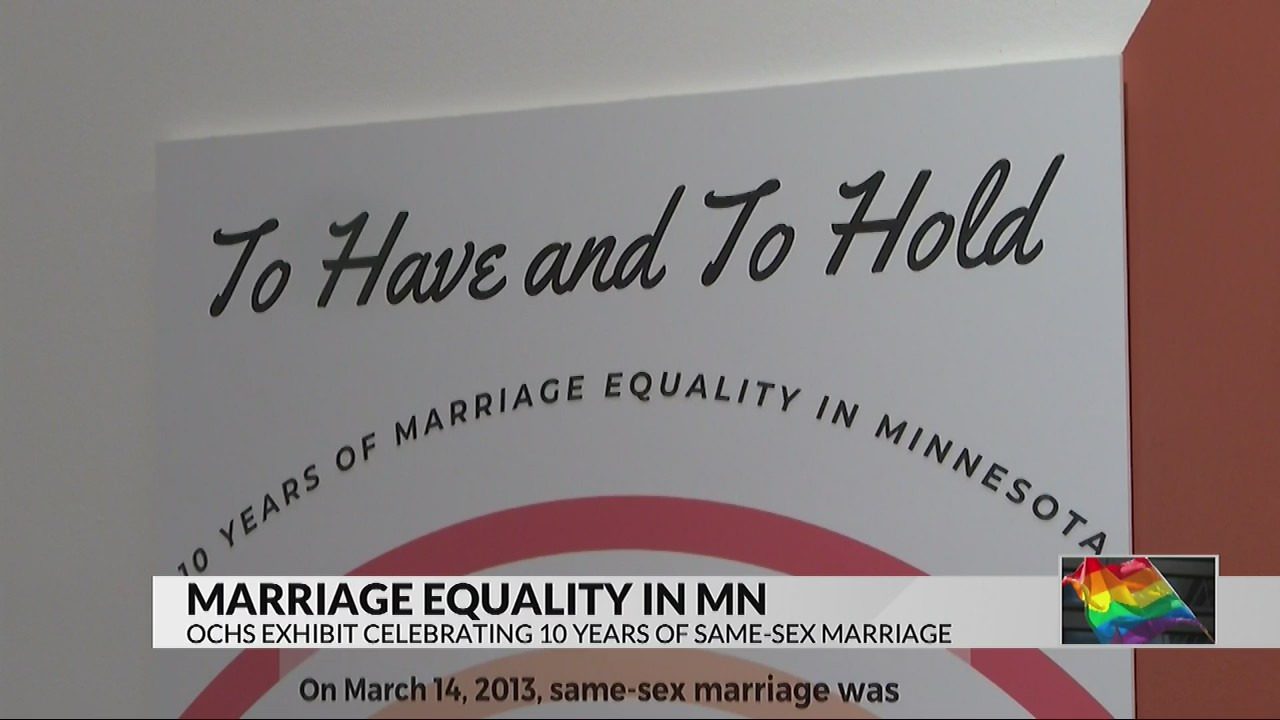Olmsted County History Center celebrates ten years of marriage equality in Minnesota
[anvplayer video=”5187316″ station=”998128″]
(ABC 6 News) – Today marks ten years since a historic law change in the state of Minnesota.
Back in 2013, then Governor Mark Dayton, signed a bill into law making it legal for same sex couples to get married.
Months later on August 1, the law went into effect, making Minnesota the 12th state to do so.
The U.S. had a long standing history of not recognizing same-sex marriages, but that all changed in 2004.
That’s when Massachusetts became the first state in the country to legalize marriage between same-sex couples.

Five years later, Iowa became the third state, following a ruling from the Iowa Supreme Court.
Then in 2013, the same year Minnesota passed its law, the U.S. Supreme Court struck down the law barring federal recognition of same-sex marriage.
To mark Minnesota’s milestone, the Olmsted County History Center hosted an event celebrating the historic change.
It all started “back in 1971, with Jack Baker and Michael Mcconnell, who are considered America’s first gay marriage,” said Jenna Collins, the Collections Manager at the Olmsted County History Center, and the individual responsible for creating the exhibit on marriage equality.
Two men in Minnesota, using a legal loophole and some creativity, got a marriage license.
One man was a lawyer, and the other changed his name to a gender-neutral one, and they got a license, playing the system that didn’t specifically forbid two men from marrying.
“But once that happened, it kinda got cracked down on,” said Collins.
It would be decades before another gay couple in Minnesota, or the country got legally married again.
It was a push for a constitutional ban in Minnesota in 2012 that fired up the fight for marriage equality.
“I got to vote no in that first election, which was really important to me as somebody who identifies as queer,” said Collins.
Collins is one of the Minnesotans who helped strike that amendment down. It proved the majority of Minnesotans weren’t against same-sex marriage, and lawmakers legalized it less than a year later.
It’s a part of history Collins is highlighting with this exhibit at the History Center. It explains the journey same-sex couples have had to get where we are today.
“It’s nice to see families that look like ours, and everyone here has just been so accepting and loving, definitely a lot different from where we came from,” said Heather Mckenzie-Roberts, a member of the LGBTQ community. She and her wife moved to Minnesota from South Carolina.
“Less people who stare at you when you’re walking, just like holding hands. It’s just, you’re not always having to look around and be in fear that someone could say something, or that someone could possibly try to attack you,” said Mckenzie-Roberts.
But the fight isn’t over in the LGBTQ community.
“Especially right now for trans folks, there are a lot of laws around the county that are really limiting their freedoms,” said Collins. Just like it was when it came to marriage ten years ago.
While people are celebrating today in Minnesota, in Iowa, a bill was introduced this past legislative session to define marriage as between “a biological male and a biological female.”
Though that bill did not pass, Republican lawmakers have said that they plan to re-introduce it in the future.